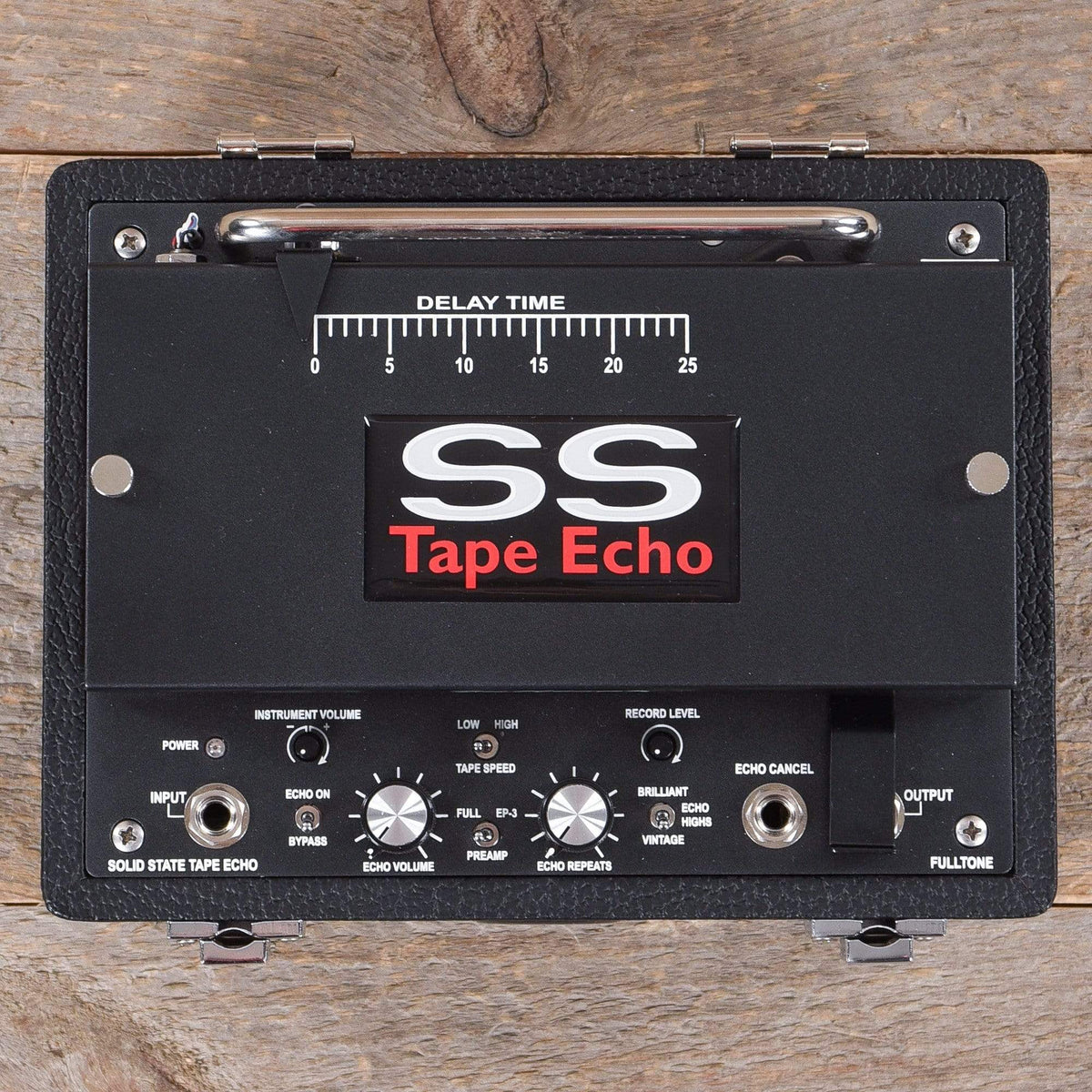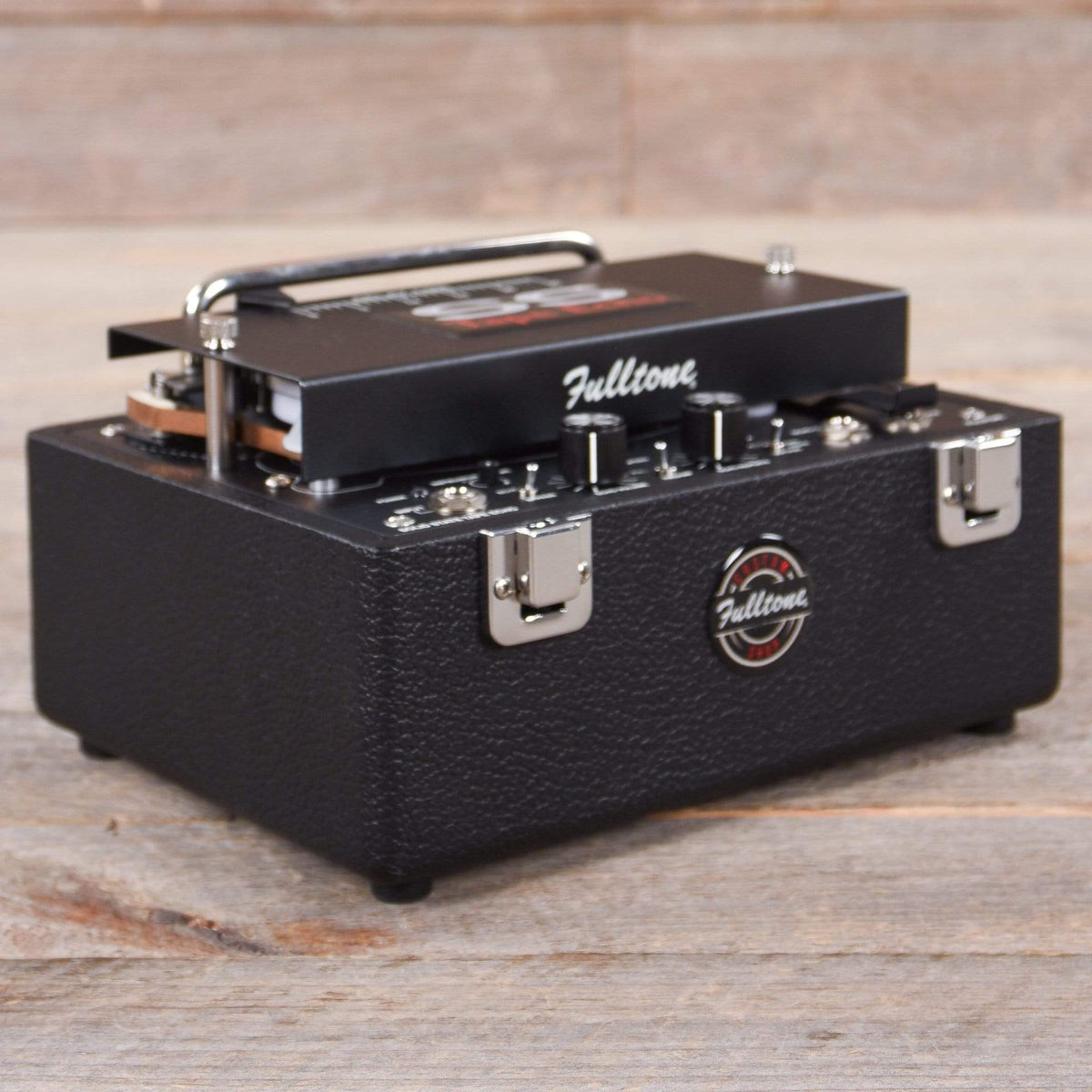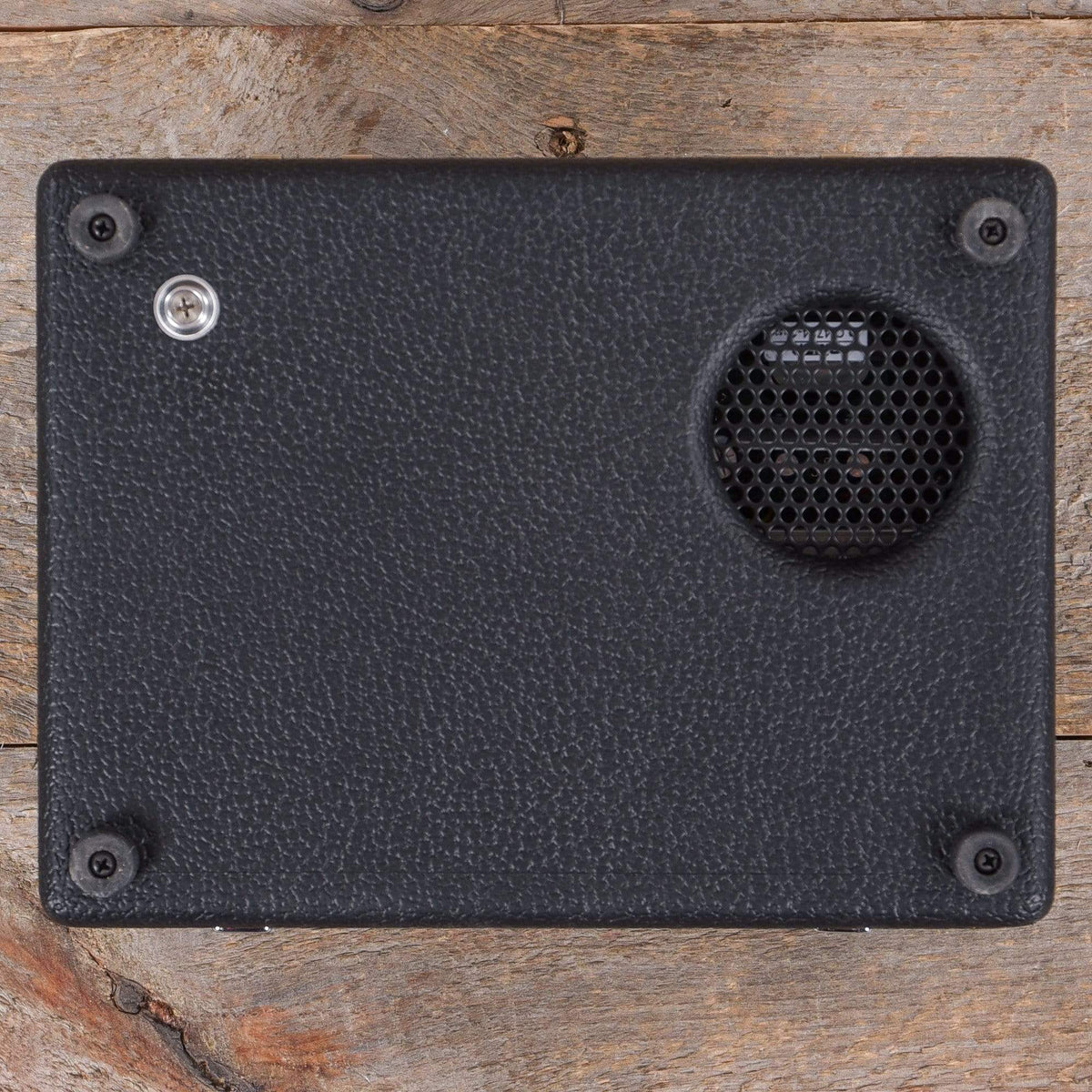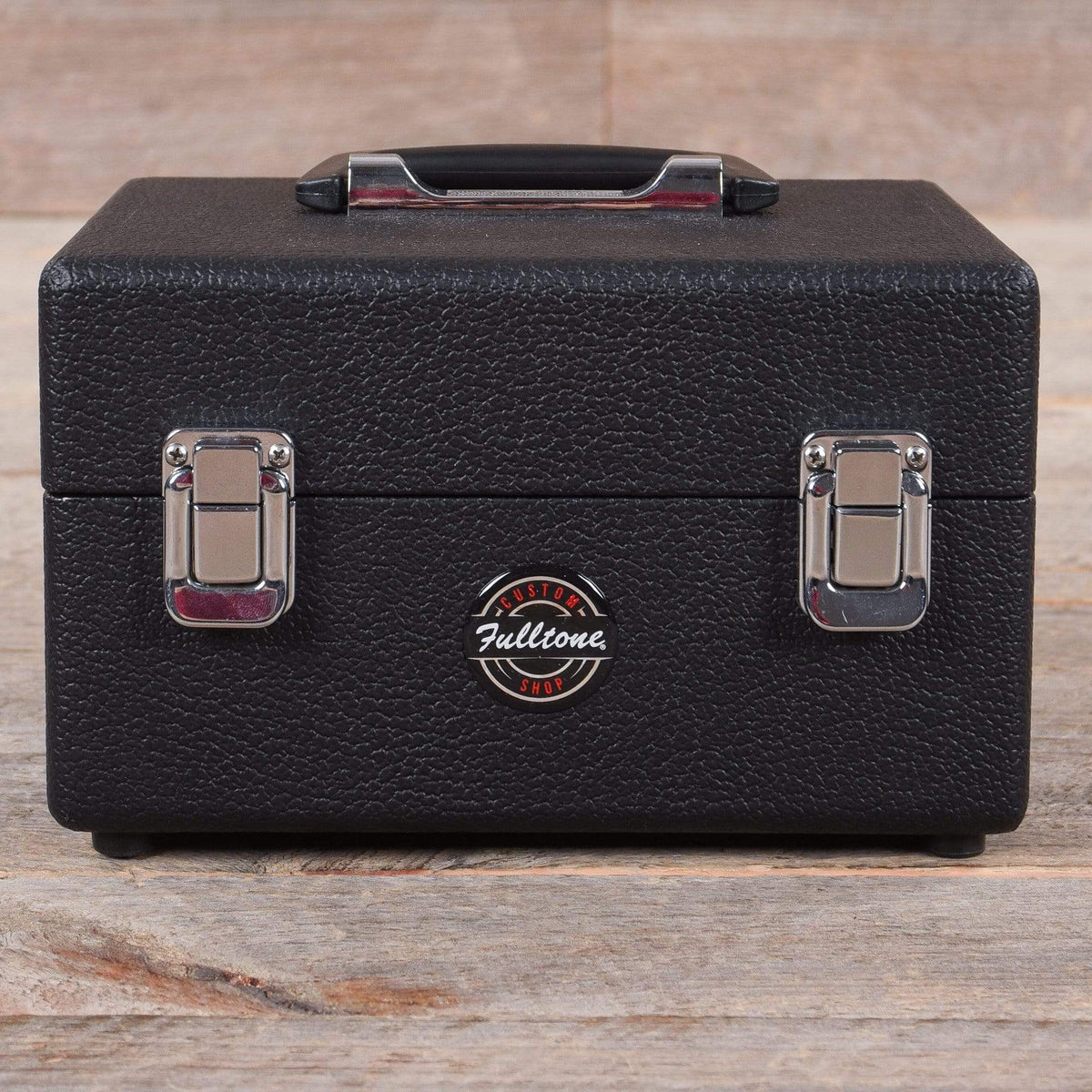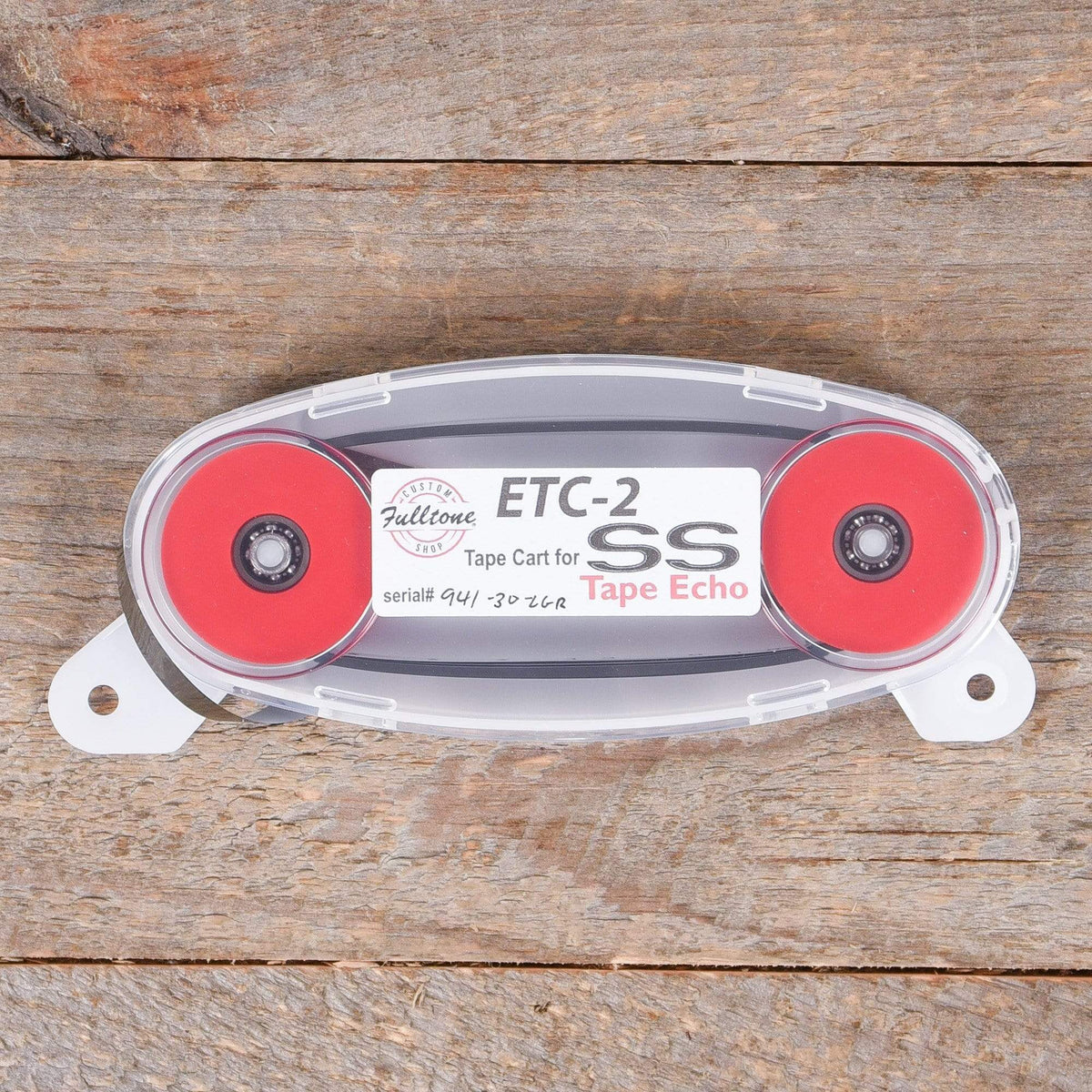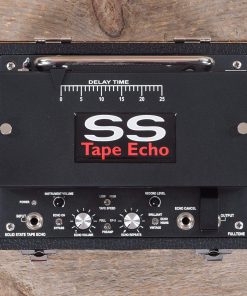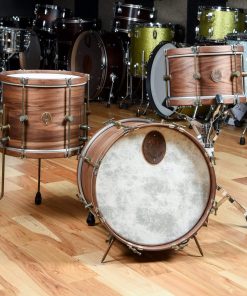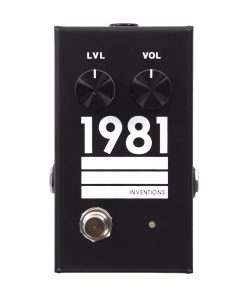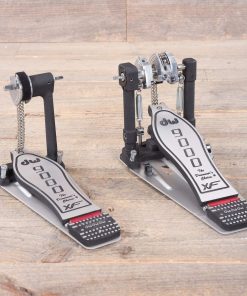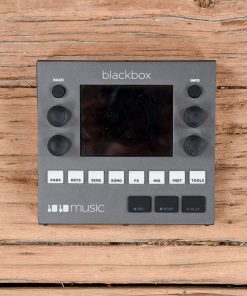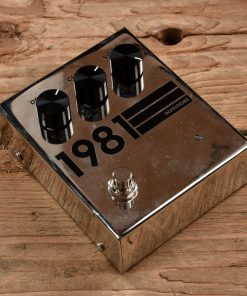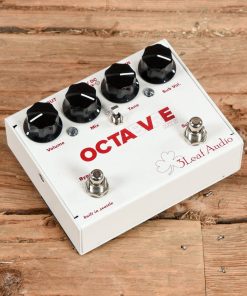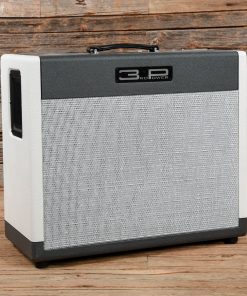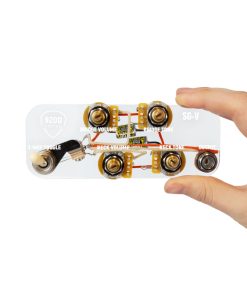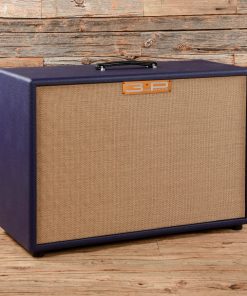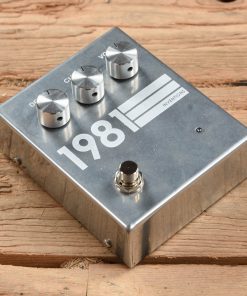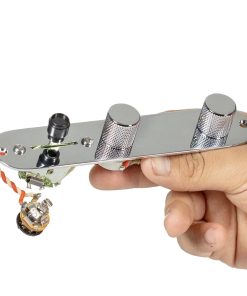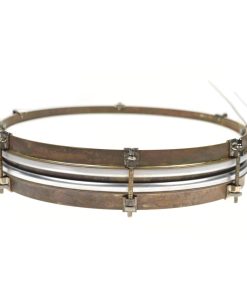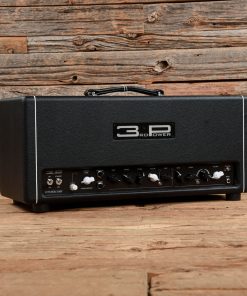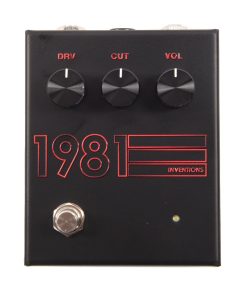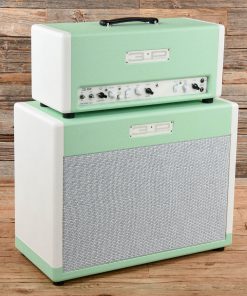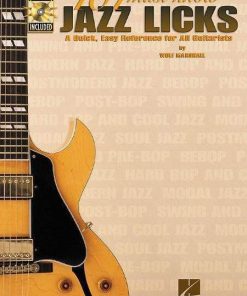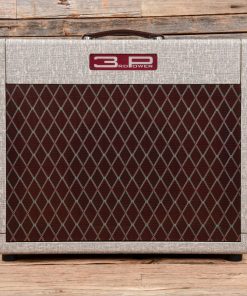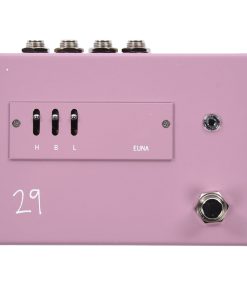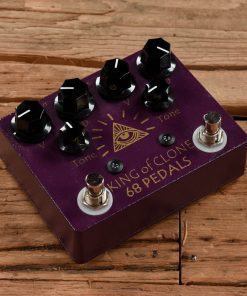Fulltone Custom Shop Solid State Tape Echo Fulltone
$ 1.225,00 $ 306,25
Please Note: This item is sold As-Described and cannot be returned unless it arrives in a condition different from how it was described or photographed.
Condition: Packaging has been opened.
From Fulltone:
In the early 80’s I worked in music stores teaching Guitar and selling & repairing gear. One day a guy came in with a 70’s Echoplex EP-3 tape delay asking $30 for it!. The owner of the store said he didn’t want it so I bought it and thus was born a life-long love affair with tape echo. I used that solid-state Echoplex all through the 80’s and early 90’s. Everyone else showed up for auditions with a refrigerator rack full of cold, thin sounding gear, and more often than not I’d steal the gig using a pair of Blackface Fenders, a Plexi Marshall Half stack, a couple of homemade pedals and that trusty early version EP-3.
Why do Page, early Van Halen, Brian may, Steve Stevens, etc seem to favor those early EP-3’s? Because of the sound and feel of the preamp. It’s that TIS58 JFET running on 22 volts, but not just that. The first version EP-3’s cut a bit of Bass and boost the highs a little, creating a beautiful sound and feel that no other delay, nor any of the “EP-3 preamp pedals” can accurately create when running on anything less than 22 volts. That’s just what a loud 4×12 Marshall amp needs….less bass, and more clarity.
What is the downside to using an old Echoplex? No one knows how to adjust, optimize, or repair them, AND they produce a massive amount of hum that you just have to get used to. Nowadays no one will put up with that ever-present hum. Back then they had inferior recording-head technology, crappy tape, and didn’t have a clue how to lay out a circuit. There I said it. With all those wires strewn about, all up in the air, acting like antennas, and too many grounding points, instead of tying them all together to one…no wonder Echoplexes are so damned noisy!
Features:
1/3 smaller than the original Echoplex. Handmade and bullet-proof.
1/4″ tape for FAT sounding delay, using the ball-bearing equipped Fulltone ETC-1 Tape Cartridge.
None of the Hiss and Hum found in vintage Echoplexes.
- Optimal 1.1 mega ohm Input impedance and super-low 10K output impedance …SSTE has none of the issues that Echoplexes have driving long cables and is not affected by devices coming before or after, either. EP-3’s have a 200K-350K output impedance and no output buffer…that causes interaction issues!
- True-Bypass toggle switch, which you won’t use much because of the SSTE’s low output impedance, but it’s nice to be able to bypass to check your levels.
- 2 Tape speeds with a moveable Playback head to achieve everything from super-quick Plate Reverb emulations, to Rockabilly slapbacks, to a full 1 second delays. Manipulating a moveable playback head is the only way to achieve the Jimmy Page-like self-oscillating trick using a tape echo.
2 Preamp Modes:
EP-3 mode is the identical TIS58 JFET circuit of the first version (pre-serial #9451) Echoplex EP-3, offering that slight bass cut and slight treble boost favored by Page, Brian May, Steve Stevens, Tommy Bolin, etc. that works so well in high-volume stage situations.
Full mode is dead-on, honest, full-range rich sound, just like your bypassed sound, in case you aren’t craving that unique Ep-3 color. Beautiful.
- Separate Instrument Volume & Echo Volume control knobs – unlike the single “Mix” knob on an EP-3 which gave a fixed Instrument Volume and increased Hum as you turned clockwise. The SSTE’s Instrument Volume knob has a center detente at 12 o’clock denoting “unity gain” and up to 10dB of clean boost available as you turn clockwise.
- Echo Repeats – turn clockwise to add repeats, and easily go into self-oscillation around 1 o’clock depending on Record Level knob setting.
- Echo Highs tone switch: affects only the Echo Repeats, not your guitar tone.
Vintage – look, Echoplexes hissed a lot, so instead of fixing the problem, they slapped a capacitor to ground to kill the highs where the hiss resides…primitive but effective. It’s part of the “EP-3 sound” and Vintage mode gets that sound.
Brilliant – allows more overtones and highs on the repeats…a subtle difference, not trebly, but (no joke) I find myself checking to see if the reverb is on due to the intoxicating psycho-acoustic imagery this mode imparts. Who needs drugs? A little Green Dot or Maker’s Mark over ice and I’m good for 3 hours on the SSTE.
Record Level – small mini-knob adjusts how much signal smacks the tape. 3 o’clock is normal, above that and the Echoes get THICKER.
Relay-activated footswitchable Echo Cancel – unlike Echoplexes, the SSTE doesn’t route the Echo signal through the echo cancel footswitch…which absolutely kills the delay sound if you use a cable over 6 feet in length. With the SSTE and using the (optional) Fulltone Echo Cancel Footswitch (ECF) you can use any standard guitar cable up to 500ft in length if need-be. And there’s no need to power the footswitch to see its bright Red & Green LED’s because the power is sent through that cable from the SSTE… Pretty slick, eh?
Fast Shipping with Professional Packaging
We offer a wide range of shipping options due to our long-standing partnerships with UPS, FedEx and DHL. Our warehouse staff are trained to pack your goods exactly according to the specifications we offer. Before shipping the goods are thoroughly examined and secured. Every day, we send thousands of packages to clients from all over the world. Our determination to be the biggest online retailer in the world is shown by this. The warehouses are located in Europe as much as they are in USA.
Note: Orders with more than one product will be assigned a distinct processing time, dependent on the particular item.
Before shipping, we will examine the items ordered thoroughly before sending the items. The majority of orders are shipped within 48 hrs. The delivery estimate is between 3-7 days.
Returns
The stock is constantly changing and cannot be fully controlled by us because of the involvement of several parties including the factory and our warehouse. Stock levels can fluctuate at any given time. Please be aware that it is possible that your order could become unavailable even after you've placed your order.
Our policy is valid for a period of 30 days. If 30 days have passed by since your purchase however, we're unable to give an exchange or refund.
In order to be eligible for a refund your product must be unopened and in the same state as you received it. It should also be in the original package.
Related products
Accessories / Books and DVDs
Drums and Percussion / Acoustic Drums / Full Acoustic Kits
A&F Drum Co. 12/14/18 3pc. Walnut Club Drum Kit A&F Drum Co.
Effects and Pedals / Wahs and Filters
Effects and Pedals / Overdrive and Boost
Drums and Percussion / Parts and Accessories / Drum Parts
Effects and Pedals / Controllers, Volume and Expression
Effects and Pedals / Overdrive and Boost
Effects and Pedals / Octave and Pitch
Amps / Guitar Combos
3rd Power Amplification British Dream Combo 3rd Power Amplification
Parts / Amp Parts
Amps / Guitar Cabinets
3rd Power Amplification 2×12″ Guitar Speaker Cab 3rd Power Amplification
Accessories / Books and DVDs
Effects and Pedals / Overdrive and Boost
Accessories / Books and DVDs
Effects and Pedals / Overdrive and Boost
1981 Inventions DRV Overdrive Black Hyperfade 1981 Inventions
Drums and Percussion / Acoustic Drums / Snare
A&F Drum Co. 1.75×14 Pancake Raw Brass Snare Drum A&F Drum Co.
Parts / Amp Parts
920D Custom JB-CON-CH-BK Upgraded Replacement ’62 Jazz Bass Concentric Control Plate 920D Custom
Amps / Guitar Heads
Amps / Guitar Cabinets
3rd Power Amplification Kitchen Sink Guitar Head 3rd Power Amplification
Accessories / Books and DVDs
Keyboards and Synths / Synths / Eurorack
Accessories / Merchandise
Effects and Pedals / Overdrive and Boost
1981 Inventions Special Edition Stranger DRV Overdrive Pedal 1981 Inventions
Parts / Amp Parts
Amps / Guitar Cabinets
3rd Power Amplification Dual Citizen 2-Channel 40-Watt Head w/ 2×12 Cab 3rd Power Amplification
Accessories / Books and DVDs
Amps / Guitar Combos
Amps / Guitar Combos
3rd Power Amplification British Dream MKII 1×12 Combo 3rd Power Amplification
Effects and Pedals / Overdrive and Boost
29 Pedals Special Run Crunch Berry EUNA Elite Unity Amplifier Input Driver 29 Pedals
Effects and Pedals / Overdrive and Boost
